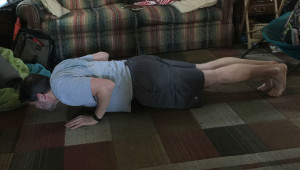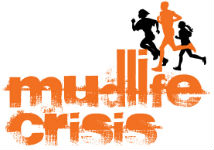Everyone has their favorite workout tools, for sure. There are kettlebells, dumbbells, resistance bands, suspension trainers, barbells, Nautilus machines, ab wheels, and shake weights (okay, maybe not that last one). There are workout DVDs, personal trainers, Zumba classes, yoga studios, and every type of routine you can imagine. But for my money, few things are as effective and excuse-free as the bodyweight exercise workout.

I first got into bodyweight workouts back when I was beginning to study historical European martial arts (that’s right, swords and such – it was fun and exhausting). A lot of the work was grappling work, which I had never done, and some of the more experienced guys suggested doing a workout routine known as Combat Conditioning by a fellow named Matt Furey. Furey’s marketing was suspect to me, but as other guys I knew swore by his stuff, I gave it a try, and what do you know: it worked. In fact, it worked better than anything I’d ever tried before.
Combat Conditioning was my first foray into bodyweight workouts – that is, doing workouts consisting only of exercises using your own bodyweight. Lots of push-ups, squats, bridging, pull-ups, isometric static positions, and more. The nice thing about the routines was that I could literally do them anywhere, any time, and all I needed was maybe a pull-up bar of some kind if that was in the workout routine for the day. Combine the workouts with some running and you had the makings of a full-body strength, endurance, and cardiovascular workout, all in one.
As time went on, I started looking at other routines to mix things up a bit, and naturally I found them. The two that really took hold of me more than anything else were MovNat and Animal Flow, which I’ve mentioned before. And as I started looking for new workout routines, I also started to stumble across places where I could test my progress with such workouts: specifically, obstacle course races (OCRs)! And the rest is history.
There are a ton of great workout routines out there that fit into this bucket. Combat Conditioning is the work of Matt Furey, as I said, and he got his routines from the workouts of old style wrestlers – from ancient Indian and Chinese wrestlers (Furey is a former world champion Shuai-Chao Kung Fu competitor as well as a collegiate level freestyle wrestler and Catch wrestler, for example).
A lot of his work falls into the “everything old is new again” – he has three core exercises and a literal ton of other exercises (all bodyweight-based) that round out the workouts and let people specialize as they want. The three main exercises are Hindu Pushups, Hindu Squats, and Bridging (which Furey does with an interesting twist of trying to make sure you can get your forehead flat on the ground – it sounds crazy but it actually works). He also does a lot of work with dynamic breathing and stretching. He garners a lot of criticism for not creating anything that is “new,” but for my money the workouts are solid, they’re made up of stuff that I’d never have known existed, and the ideas behind them jibe with functional strength and endurance workouts that exist today. He primarily publishes to DVDs and books.
Another great program is Mark Sisson’s Primal Blueprint Fitness program, which is an e-book that you get when you sign up for his website mailing list. Don’t let the free nature of this workout throw you, though – it’s a great high quality program. Sisson bases the work on three points of his Primal Blueprint “rule” – those being “Move around a lot at a slow pace,” “Lift heavy things,” and “Run really fast once in a while.”
To me, the highlight of the e-book is the strength portion, that is, again, made up entirely of bodyweight exercises which Sisson calls the Essential Primal Movements – push-ups, squats, pull-ups, and planks. But it’s not just a list of exercises you should do – it comes complete with a VERY simple (not easy, simple) assessment and customization program based on how many of a specific exercise you can do now. Basically, you do the four essential movements to failure. Then, based on the number of reps you can complete in good form, you are instructed in where you should start with your regular workouts: for instance, if you can do 15 push-ups in the assessment, you’ll start your regular workouts with knee push-ups. Then, the regular workouts consists of two sets of each exercise done to failure with a minute rest between them (so you do a max set of push-up variations, squat variations, pull-up variations, and plank variations; rest a minute; and then do it again).
You’re also given the number of reps of the each exercise variation that you should be able to do before moving to the next more difficult variation (example: once you can do fifty knee push-ups, you should move to doing incline push-ups as the next variation). The variations even get more difficult after you achieve the prescribed reps for the main exercise – for instance, after you complete sets of 50 push-ups, you move on to decline push-ups, uneven push-ups, and more.
It’s a very complete program, and it’s free for readers of Mark’s Daily Apple (which I refer to a lot as you probably are aware, if you’re a regular reader).
The third and last routine I’ll mention today is a new one, that I mentioned on Twitter and a couple other places last week: that is Al Kavadlo’s “We’re Working Out!” smart phone app. Al is a stalwart in the bodyweight/calisthenics community. He and his brother Danny have put together the Progressive Calisthenics Certification and numerous books and videos, and his app (available on both iOS and Android phones/tablets) is a great place to start or to really test yourself no matter what your level of fitness. It’s got great workouts for a variety of goals, clear video demonstrations of each exercise along with text descriptions, and walk-throughs of the various workouts. I’ve tried the app and love it so far.
Al’s posted on his Facebook page that he has plans to incorporate new exercises and more features to the app – and it’s free, so check it out today! You can keep up with some of Al’s discussion of the app here on his Facebook page.
We’ll have future posts that talk about various bodyweight routines – so make sure to follow along as we present more of these types of workouts because there are a ton of them!
Do you do bodyweight routines? Care to share them below?






